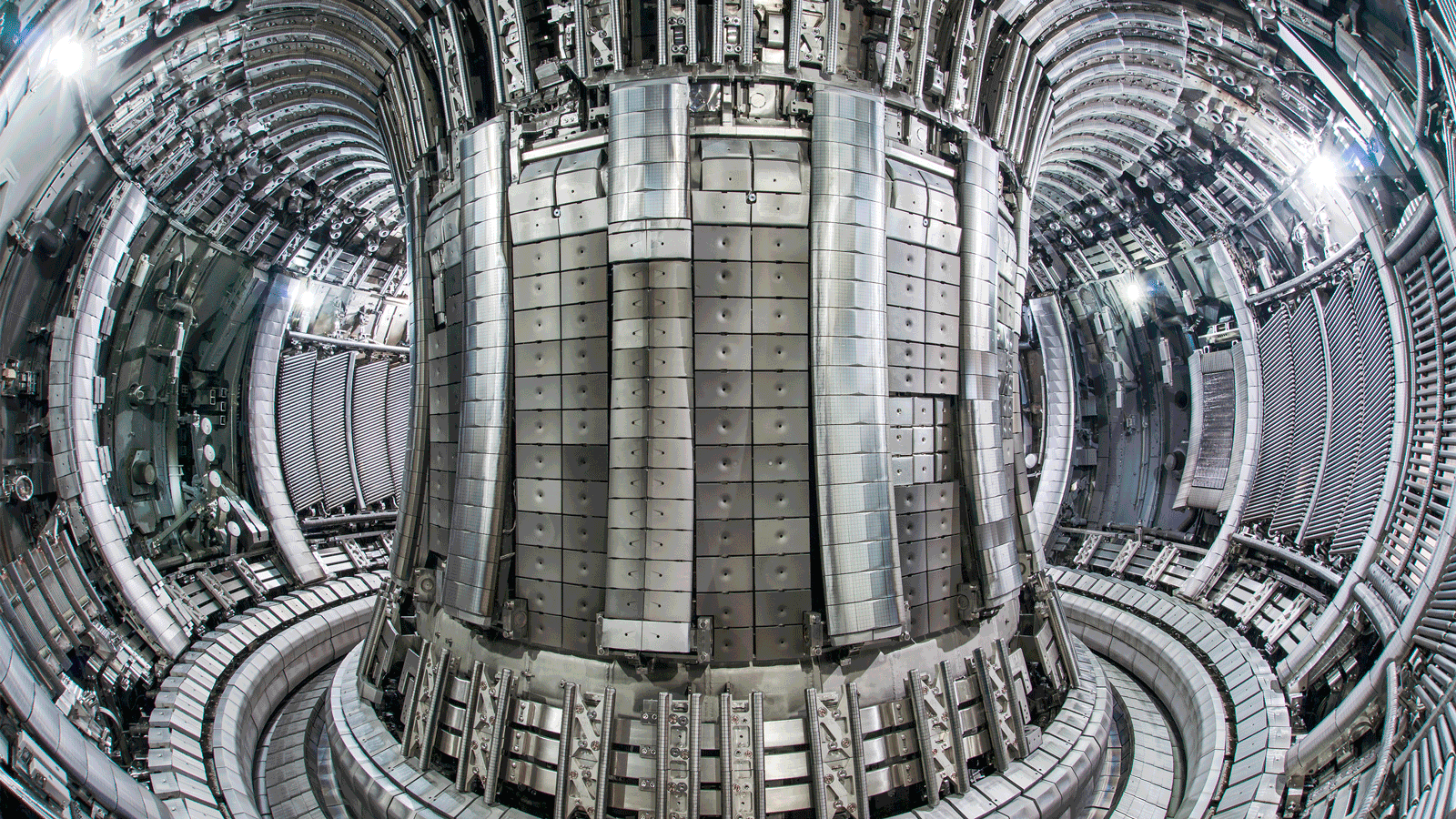
By E+T Editorial Team Thu 22 Feb 2024
Collected at : https://eandt.theiet.org/2024/02/22/nuclear-fusion-stabilised-ai-controller
Nuclear fusion is a reaction in which two or more nuclei are fused together – for low-mass nuclei, this usually results in the release of energy. Harvesting this energy to boil water and turn steam turbines could provide an almost unlimited source of green power, but nuclear fusion power remains unviable after decades of work.
Nuclear fusion reactions have not been sustained for longer than seconds, with a new record being set earlier this year by researchers at the Joint European Torus in Oxfordshire, who sustained fusion for five seconds.
Most nuclear fusion experiments involve heating hydrogen to tremendous temperatures within a doughnut-shaped reactor (a tokamak) to form a plasma – a hot, ionised state of matter with electrons stripped from their atoms – which is held in place by powerful magnetic fields. This is necessary to create the extreme star-like conditions under which fusion begins.
One of the major obstacles to harnessing nuclear fusion for power generation is the instability of this plasma. The plasma is susceptible to ‘tearing’ at the smallest disruption and escaping the confines of the magnetic fields. This upsets its equilibrium and ends the reactions suddenly.
The US researchers, in a Nature paper , have described a method of using AI to predict tearing and prevent it from happening in real time.
They constructed a deep neural network to predict the likelihood of tearing, based on real-time plasma characteristics, then used that neural network to train a reinforcement learning algorithm. This was able to ‘test out’ different strategies for controlling plasma within a simulated environment – over time, it learnt “the optimal pathway for achieving the goal of high power while avoiding the punishment of an instability”.
Testing their AI controller in a practical test run at the DIII-D National Fusion Facility in San Diego, California, the researchers found that it was capable of predicting plasma tearing up to 0.3 seconds in advance. This gave the controller plenty of time to adjust certain operating parameters to avoid tearing.
“Previous studies have generally focused on either suppressing or mitigating the effects of these tearing instabilities after they occur in the plasma,” said first author Professor Jaemin Seo, who, since the project was completed, has moved to Chung-Ang University in South Korea. “But our approach allows us to predict and avoid those instabilities before they ever appear.”
Next, the researchers will gather more evidence of the AI controller in action at the San Diego tokamak, before testing it at other tokamaks. “We have strong evidence that the controller works quite well at DIII-D, but we need more data to show that it can work in a number of different situations. We want to work towards something more universal,” said Seo.
They will also experiment with expanding the algorithm to handle many different control problems simultaneously.

Leave a Reply